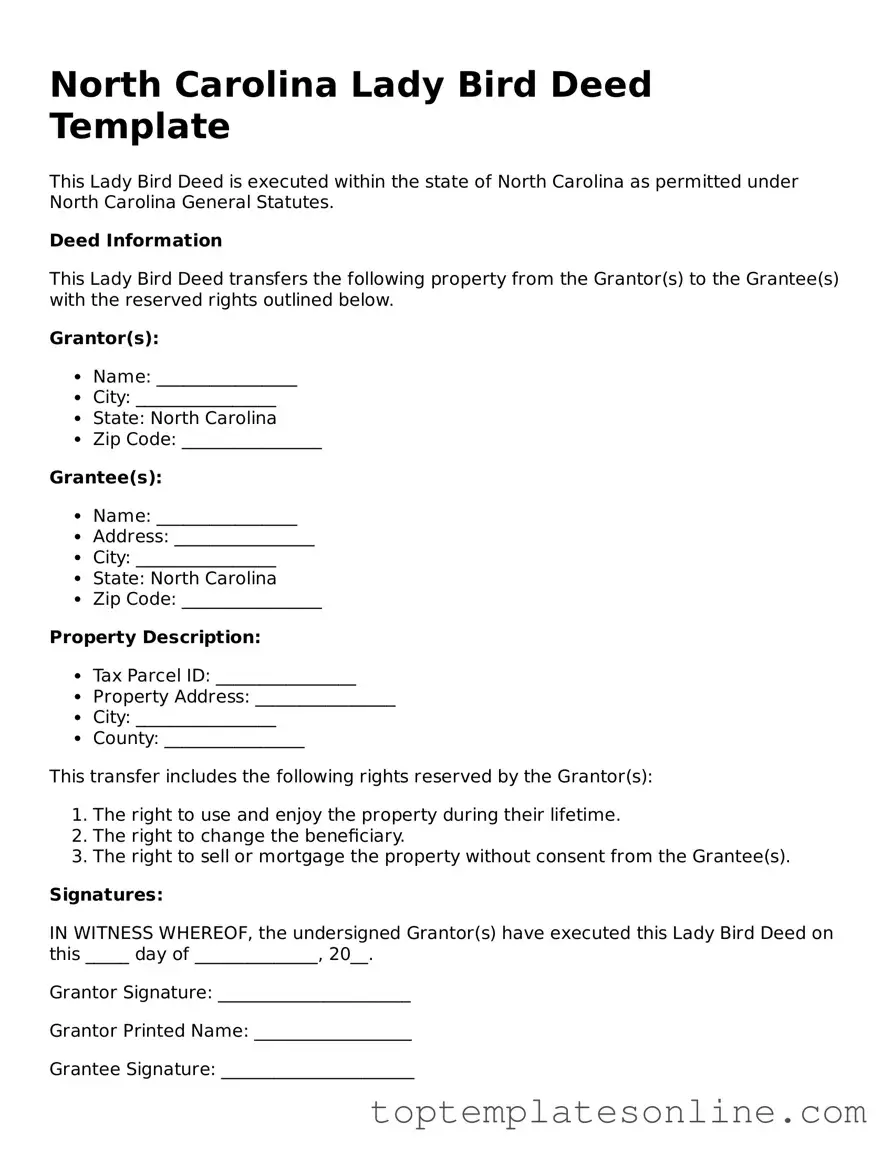Blank Lady Bird Deed Template for North Carolina State
The North Carolina Lady Bird Deed form is a unique estate planning tool that allows property owners to transfer their real estate to beneficiaries while retaining certain rights during their lifetime. This type of deed provides flexibility and can help avoid probate, making it an attractive option for many. Understanding its features and implications is essential for anyone considering this method of property transfer.
Customize Lady Bird Deed Here
